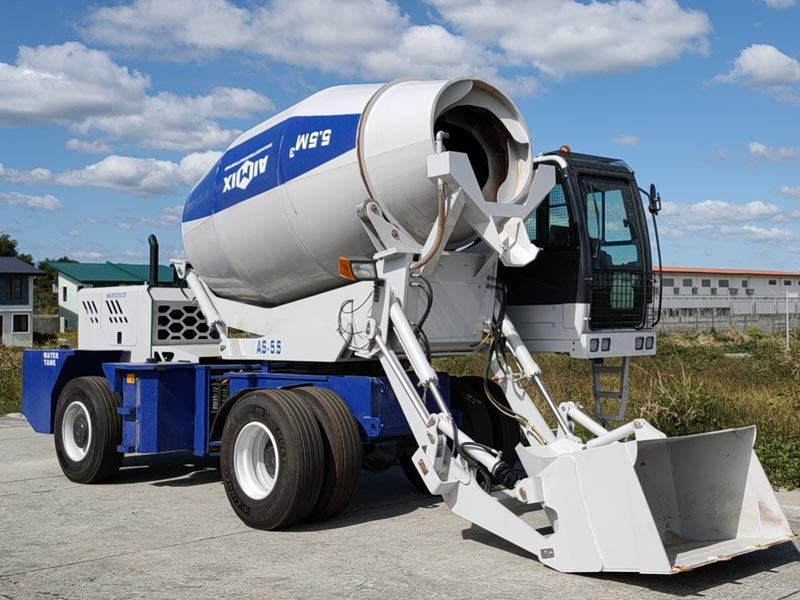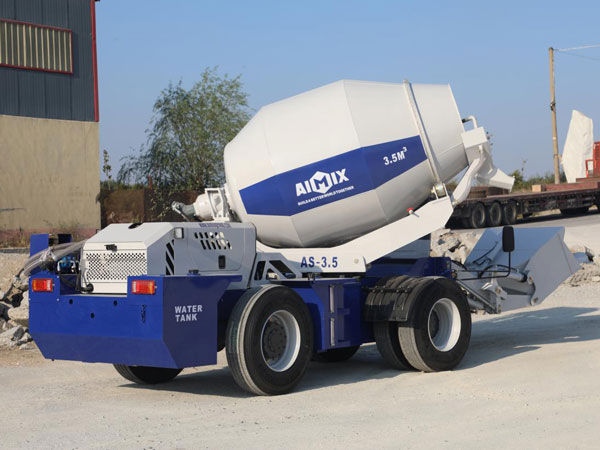How to Properly Use a Concrete Mixer?
- aimixglobal2024
- 4月1日
- 讀畢需時 3 分鐘
Using a concrete mixer efficiently is essential for achieving the best results in your construction projects. Whether you're working with a self loading concrete mixer, mobile concrete mixer, hydraulic concrete mixer, or portable concrete mixer, knowing how to use these tools correctly can save time and ensure a high-quality mix. This article provides new, valuable, and useful tips for customers seeking to properly use their concrete mixers.

Understanding Your Concrete Mixer
First, understand the type of concrete mixer you have. The self mixer automates the mixing process. Mobile concrete mixers offer portability for different sites. Hydraulic concrete mixers handle large volumes efficiently. Portable concrete mixers are compact and versatile.
Each type has specific features and benefits. Familiarize yourself with the controls and functions of your mixer. This knowledge will help you use it effectively and safely.
Preparing Your Mixer
Before starting, ensure your concrete mixer is clean and free from debris. This prevents contamination and ensures a consistent mix. Check all components for damage or wear. Replace any faulty parts before use.
For self loading concrete mixers, inspect the automatic loading system. Ensure it operates correctly. For mobile mixers, check the wheels and suspension. Hydraulic mixers require checking pressure gauges. Portable mixers need inspection of adjustable stands and speed controls.
Loading Materials
Loading materials correctly is crucial for a good mix. For self loading mixers, follow the manufacturer's instructions for loading. These mixers automate the process, reducing manual labor.
For other mixers, add materials manually. Start by loading the aggregate, followed by cement, and lastly water. Ensure the correct proportions for a consistent mix. Avoid overloading the drum to prevent damage and ensure proper mixing.

Mixing Process
Once loaded, start the mixing process. For self loading mixers, set the control panel to the desired settings. These mixers will handle the rest. For mobile mixers, ensure they are on a stable surface before starting.
For hydraulic concrete mixers, monitor the pressure gauges. Adjust as necessary for optimal performance. Portable mixers require setting the speed controls correctly. Mix until the concrete reaches the desired consistency.
Pouring Concrete
After mixing, pour the concrete carefully. Position the mixer close to the pouring site. For self loading mixers, use the automated discharge system. For mobile mixers, ensure the drum is at the correct angle.
Hydraulic mixers often have a remote control system for precise pouring. Portable mixers require manual pouring. Ensure the concrete flows smoothly and evenly. Avoid spills and wastage by controlling the flow.
Cleaning Your Mixer
Cleaning your mixer after use is essential for longevity. For self loading mixers, follow the manufacturer's cleaning instructions. These mixers often have automated cleaning systems.
For other mixers, manually clean the drum and components. Remove any residual concrete. Use water and a mild detergent for thorough cleaning. Regular cleaning prevents buildup and ensures your mixer remains efficient.
Safety Tips
Safety is crucial when using concrete mixers. Wear appropriate protective gear, including gloves and goggles. Ensure the mixer is on a stable surface before starting.
Follow the manufacturer's safety guidelines. For self loading mixers, ensure the automatic system operates correctly. For mobile mixers, secure the wheels. Hydraulic mixers require careful monitoring of pressure gauges. Portable mixers need secure stands and correct speed settings.
Conclusion
Properly using a concrete mixer ensures efficient and high-quality mixing. Understand your mixer type and prepare it before use. Load materials correctly and follow the mixing process carefully.
Pour concrete smoothly and clean the mixer after each use. Follow safety guidelines to prevent accidents. Proper use of self loading, mobile, hydraulic, and portable concrete mixers ensures successful project outcomes and extends their lifespan.




留言